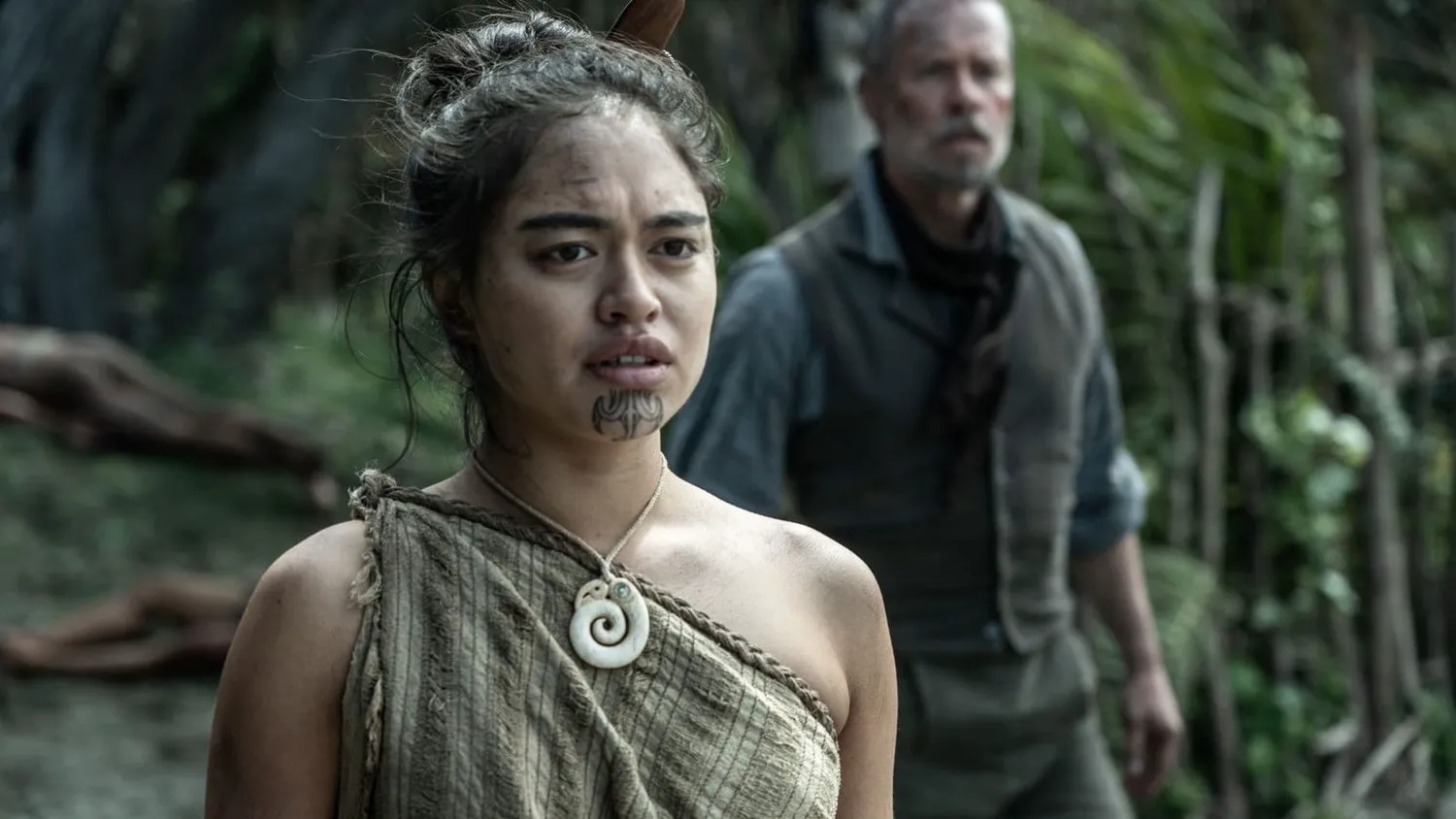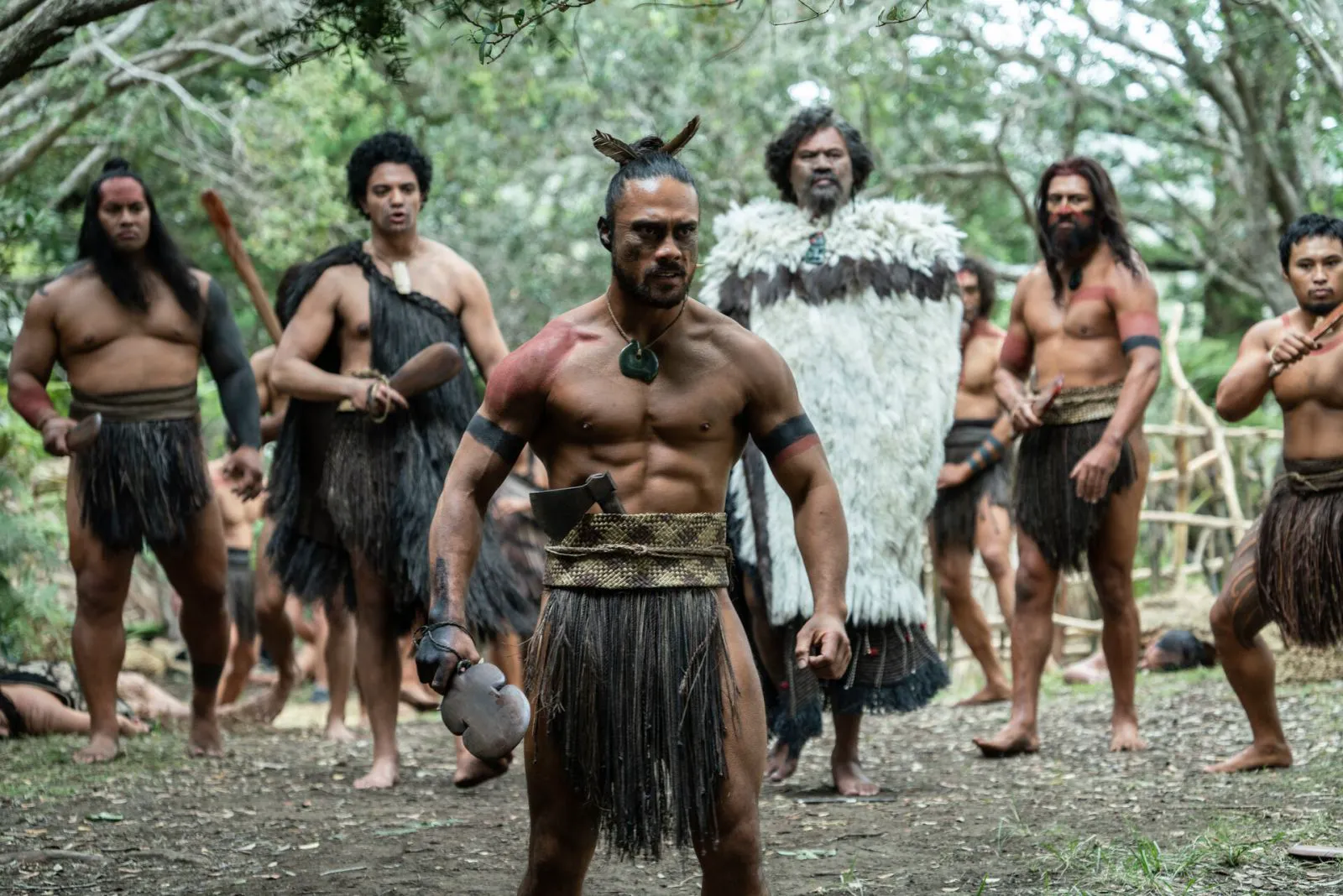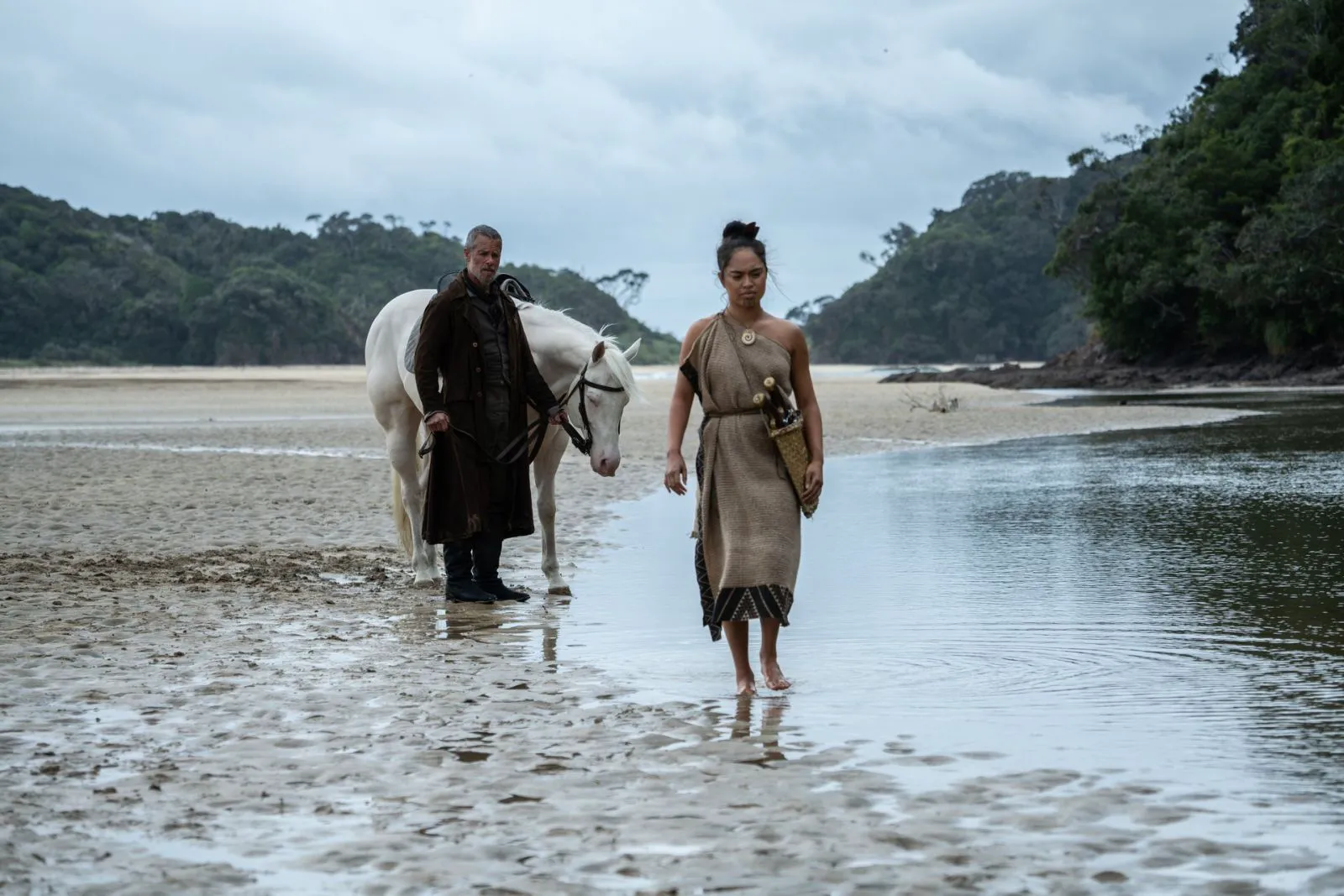Echoes of the Past: Lee Tamahori’s Return to Māori Roots in “The Convert”
In 1994, New Zealand director Lee Tamahori garnered acclaim at the Venice Film Festival with “Once Were Warriors.” This gripping crime drama, which offered a raw portrayal of modern Māori life, the indigenous people of New Zealand, catapulted Tamahori into Hollywood. During the early 2000s, he directed a James Bond film, “Die Another Day,” “XXX: State of the Union,” and even helmed an episode of the iconic series “The Sopranos.” Now, decades later, Tamahori revisits his roots, once again weaving a tale centered around the Māori.

Tireore Ngatai-Melbourne as Rangimai in a scene from “The Convert”
A Clash of Worlds in 1830
The year is 1830. The Tasman Sea. A British merchant ship sails towards the islands inhabited by the Māori. Its hold is filled with muskets and gunpowder, but the British seek trade, not conquest. They aim to exchange timber and provisions for firearms, with little concern for how the Māori will wield these weapons. In fact, if warring tribes decimate each other, it would serve British colonial interests quite well.
Among the “merchants of death” is Munro (Guy Pearce), a former soldier turned priest, “seconded” to one of these colonies, seeking redemption for past sins. His opportunity arises swiftly. Upon landing, he witnesses a brutal attack by a newly armed tribe on another. Munro rescues a young woman, Rangimai (Tioiere Ngatai-Melbourne), from execution, taking her with him to the British settlement of Epworth. A savior from afar, riding a white horse, quite literally.

Antonio Te Maioha as Maianui in a scene from “The Convert”
The Savage Truth
In Epworth, Munro’s arrival is long-awaited. The church stands empty, as does the house built for the priest. However, he arrives not alone, but with Rangimai, much to the displeasure of the local settlers who view the Māori as savages. Witnessing the inhumane treatment of the Māori, Munro realizes that the true savages are not those who live in the forests, but those who wear frock coats, prefer tea with milk, and faithfully serve the Crown. The traders who armed the Māori further inflame the situation, inciting rival tribes to compete in marksmanship. As they kill each other, the Māori fail to see that their true enemy is not the neighboring tribe, but the colonizers who arrived from across the horizon. A world torn by internal strife is ill-prepared for a new era.
Deconstructing the Savior Trope
Any detailed summary of “The Convert” might paint it as a distant New Zealand relative of Mel Gibson’s “Apocalypto.” Only the Mayan Indians are replaced by the Māori, and the conquistadors by British colonizers. However, while Gibson captivated audiences with relentless pursuit and a two-hour survival quest in the wild jungle, Lee Tamahori deliberately slows the pace. He is less interested in scenes of brutal battles (though there are enough of those) and more focused on the relationship between the Māori and the British. Where Gibson practically mythologized the story of one Mayan Indian, Tamahori, on the contrary, deconstructs the trope of the savior from afar, who, as we know, did not save the indigenous population from brutal colonizers.

Guy Pearce as Thomas in a scene from “The Convert”
A Personal Perspective
Tamahori himself is of mixed heritage, with a Māori father and a British mother. The fate of New Zealand’s indigenous population has always been a central theme in his work. One might surmise that Guy Pearce’s character is an alter ego of the director himself, desperately trying to bridge the gap between the two nations. And while the film’s ending may offer a glimmer of hope, suggesting that a mutually beneficial union is possible, reality proved far more brutal.
Following the signing of the Treaty of Waitangi in 1840, a massive influx of European settlers flooded New Zealand. By 1881, the European population had swelled to half a million, dwarfing the Māori, who suddenly found themselves a minority in their own land, a status they retain to this day.
Lingering Wounds
The consequences of the 19th-century events are reflected in New Zealand cinema, not only in Tamahori’s filmography. In “Once Were Warriors,” he told the story of Māori descendants living in poverty and destitution. Taika Waititi and Jemaine Clement, also descendants of the Māori, in their film “What We Do in the Shadows,” depict the lives of vampires living in the shadows and forced to make do with occasional snacks. Could these be Māori by chance? It seems that it took two hundred years and thousands of deaths in poverty for the Māori to be heard. And however different Tamahori’s and Waititi and Clement’s films may seem, they share a common tragedy at their core.